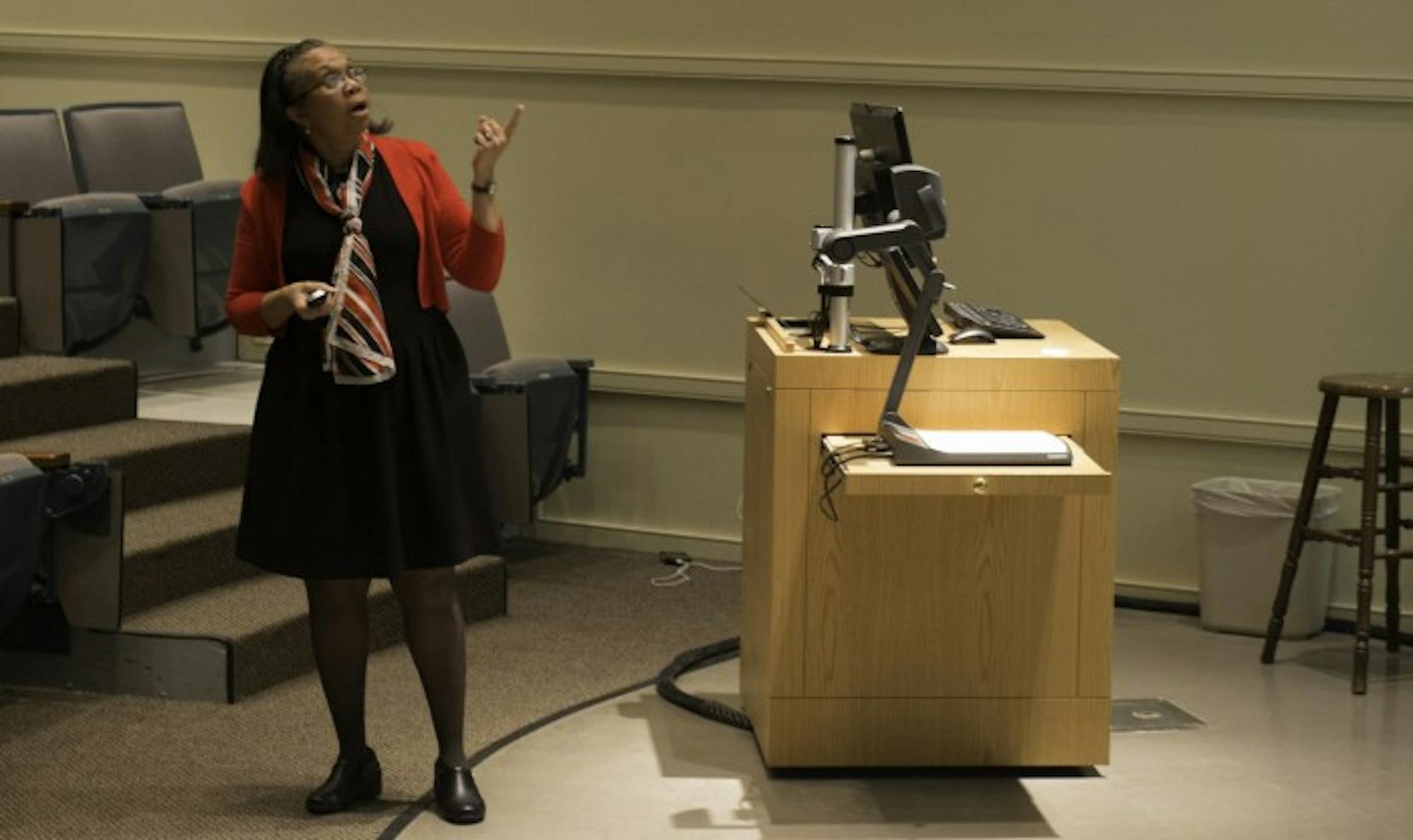Pamela Young, the University’s first director for academic diversity and inclusion, shared some of Notre Dame’s efforts to recruit more diverse faculty, staff and graduate students in a lecture Monday night in DeBartolo Hall.
“I think there are some things you have to think about that are inherent to the University,” Young said. “I remind myself of those factors on a daily basis. We’re a faith-based institution in a faith that is white, male and has a very strong hierarchy. That’s the context for the things that can get done.”
Young said some of the “beginning efforts” of the University included having all academic units complete diversity and inclusion plans and designate a diversity and inclusion representative.
Part of Young’s efforts include conducting workshops on a variety of topics related to diversity and inclusion, including cultural competency and issues related to race, class and gender.
“If there’s any area of my responsibility that I would say that’s working very well, it’s in that area,” she said. “I get a request to do a workshop, I put it together and I deliver it.”
Along with director of staff diversity and inclusion Eric Love, Young said one initiative over the past year to address issues surrounding diversity and inclusion was to create a “practitioner’s group.”
“I like the word ‘practitioner’ because I don’t see myself as an expert,” she said. “I don’t really believe anyone is an expert in this because you’re constantly learning and improving.
“We gather monthly — faculty and staff — to talk about issues of concern. In February, we talked about [University President Fr. John Jenkin’s] decision not to make Notre Dame a sanctuary campus.”
While Notre Dame staff members receive information about diversity and inclusion regarding recruiting as part of their training program in a module called “Game Changers,” Young said there was no such mandated training for faculty and that such a mandate was unlikely to happen anytime soon.
“Faculty strongly believe they are in the best position to make decisions about their department,” she said. “ … If you look at data surrounding mandating diversity and inclusion training for any professional group — not just faculty, but any workplace — the data will tell you that when you mandate training, not only will you get resistance, but you get pushback because people tend to put up more barriers.
“I think the key is to look for those opportunities where you can have an effect and also look for places where you can bring the argument to individuals in a way in which they see there’s something in it for them.”
For some programs, Young said the barriers to having a diverse faculty can be traced to having a very small pool of qualified people.
“Our school of architecture, for instance, is challenged in drawing diverse faculty for a number of reasons,” she said. “The methodology they use is classical architecture, and there are only, like, three other schools in the United States that use that methodology.”
Young said the “next steps” for recruiting more diverse faculty, staff and graduate students include the “Under One Dome” video project, a provost website project, inclusive excellence workshops and a “best practices” recruitment and hiring guide.
“The plan is to have this finalized in the spring for recruiting in the fall,” she said.













